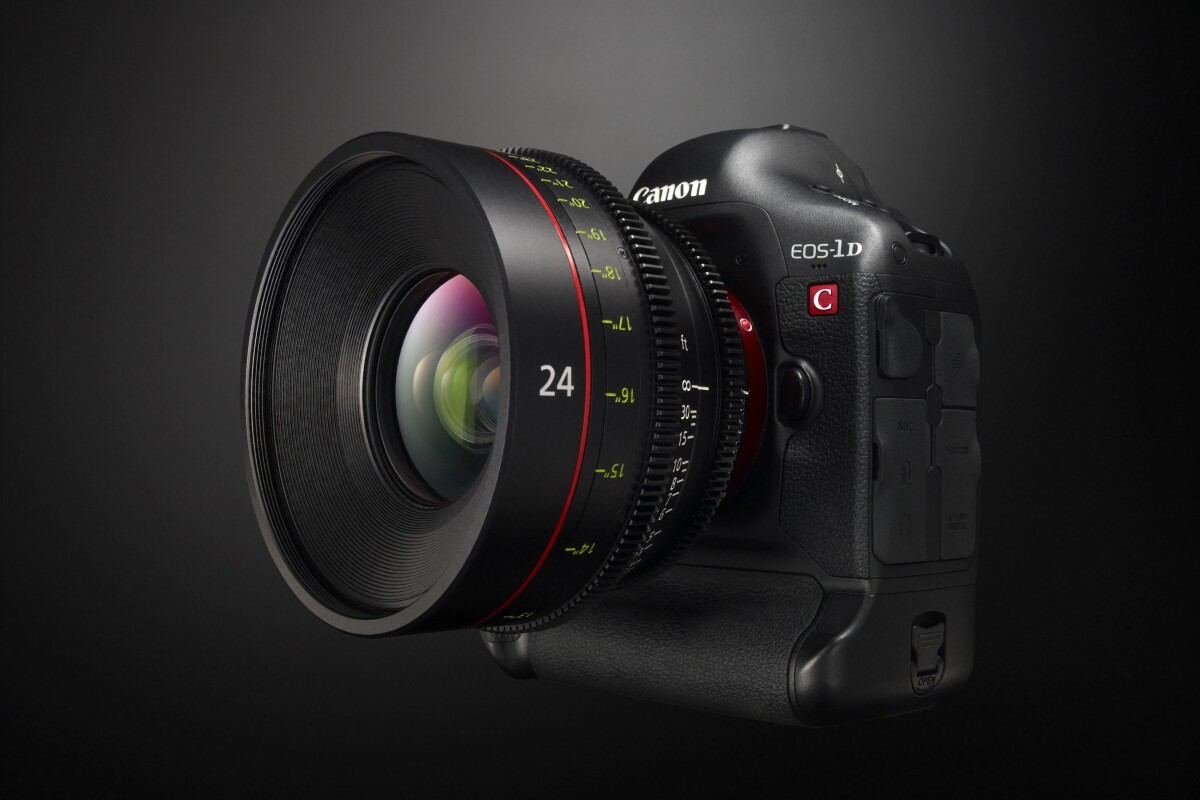Canon has just brought 4K video recording to the world of digital SLR cameras in the shape of the EOS 1D C. Developed to support the broadcast quality TV, motion picture high-resolution production industries, the new EOS family member is based on the core specs of the EOS 1D X (which has just been confirmed for a June 2012 release), with some features from last year's C300 cinema camera thrown in for good measure.
The new EOS 1D C is capable of recording Motion JPEG 4K (4096 x 2160 pixel resolution) video at 24 frames per second (fps) with 8-bit 4:2:2 color sampling or 8-bit 4:2:0 Full HD 1920 x 1080 (H.264 format) at frame rates of 24, 25, 30, 50 and 60p. Users can opt to save the 4K or Full HD recordings to the camera's CF memory card or output HD movies to an external recorder via the built-in HDMI terminal using an uncompressed YCbCr 4:2:2 signal.

Videographers choosing the 4K format can expect to capture the action on roughly an APS-H sized portion of the sensor (1.3 crop factor) while those opting for HD can choose between the full 36 mm width of the sensor or a Super 35 crop setting that enables users to match the industry-standard imaging format and angle of view achieved by traditional motion picture cameras.
The EOS 1D C is also said to retain highlight and shadow detail while providing a high level of color grading freedom thanks to the inclusion of Canon's Log Gamma (as seen on the C300). There's a built-in mono microphone or external mic connection via a stereo audio jack for Linear PCM recording quality, and a built-in headphone jack for audio monitoring.
Although optimized for high quality video capture, the EOS 1D C is by no means a slouch in the photography department. It features an 18.1 megapixel full-frame (24 x 36 mm) Canon CMOS sensor and high-performance Canon Dual DIGIC 5+ image processors delivering continuous shooting of up to 12 fps and an ISO sensitivity range that can be notched right up to ISO25600 for low noise low light video capture and up to ISO51200 for photography. Sensitivity can be further expanded from the LO setting of ISO50 to an H2 max of ISO204800.

The DSLR captures stills in RAW or JPEG image format, with simultaneous recording of both formats also possible, benefits from a 61 point AF system and can be powered by an optional AC adapter for long haul sessions or via the same LP-E4N battery pack used with the EOS-1D X. There's a pentaprism viewfinder with 100% frame coverage and 0.76% magnification and users are able to view the camera's 3.2-inch, 1,040,000 dot resolution Clear View II LCD display even while the camera is connected to an external monitor. The new camera is also compatible with over 60 Canon EF and EF Cinema lenses.
The EOS-1D C digital SLR has very portable body-only dimensions of 6.22 x 6.44 x 3.25-inches (158 x 163.6 x 82.7 mm) and will be available later this year for a suggested retail price of US$15,000.

Canon has also announced the development of four new Cinema lenses, two wide-angle cinema zoom lenses - the CN-E15.5-47mm T2.8 L S (EF mount) and the CN-E15.5-47mm T2.8 L SP (PL mount) - and two telephoto cinema zoom lenses- the CN-E30-105mm T2.8 L S (EF) and CN-E30-105mm T2.8 L SP (PL).
When all's said and done, it's not a bad answer to RED's Scarlet X, but will it be enough to draw industry professionals back over to the Canon camp?
Source: Canon



















